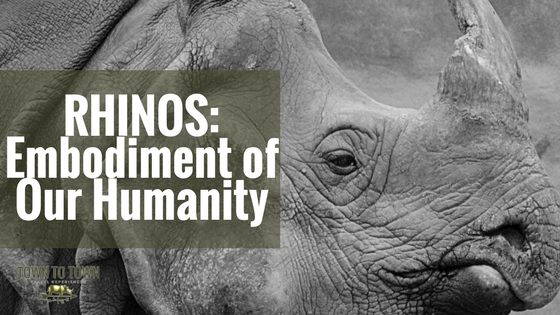Humans, as living mammals, get all of the resources that we need to survive, thrive, and modernize from the earth that we live on. Many of these resources are renewable, though some renew faster than others. The sun renews its energy daily with the sunrise. A eucalyptus tree can be harvested after 5-7 years of growth, whereas the optimal harvest time for a teak tree is 80-100 years of growth. However, many of our resources are considered non-renewable, such as coal, which would take 300 million years to replenish itself - enough time for humans to go extinct waiting for the fuel. We need to take care of our resources, use them wisely, and remember to leave some for the next generation of humans as well.
”The generation that destroys the environment is not the
generation that pays the price. That is the problem.”
– Wangari Maathai
We should act as custodians for ALL of earth’s resources, including the giant herbivores walking the earth whose only predator is… humans. A rhino’s horn, much like your fingernails, once cut down, will regrow to its full length after 3 years. There is no need for the senseless and cruel slaughter of these sentient beings simply to obtain the horn. However, the problem persists and 529 rhinos were poached in South Africa alone in 2017. That problem lies in the demand - man’s belief and faith that this resource is something they need, when in fact this placebo has been proven an ineffective antidote for all that ails you.
Many different players exist along the rhino horn supply chain, each of them taking advantage of this slow, lumbering resource. Added to that are the complexities of international laws (and loopholes) in the legal export/importation, transportation and trade of rhino horns as well as black market operations. This is why the preservation of the species will rely on global assistance from everyone.


Numerous conservationists are already doing their part in protecting land for the rhinos to roam. One rhino ranges across a broad landscape, which also encompasses many other smaller species. Rhinos help to create and define their habitat that those other species depend on. Therefore, conserving the rhino and its habitat not only protects this noble species but also ensures the stability of the ecosystem of which we are all a part. However, the environment is not the only thing that benefits.
If rhinos survive the threat of humans, it will be a symbol of animal rights, anti-corruption, and the future generation’s pride. Perhaps the future generation will become rangers, game guards, or fundraisers as the rhino also presents non-use economic opportunities in the form of tourism dollars from travelers who wish to visit the rhino in it’s own habitat.

“We abuse land because we see it
as a commodity belonging to us.
When we see land as a community
to which we belong, we may begin
to use it with love and respect.”
- Aldo Leopold
A large and visible but critically endangered brother mammal will go extinct before our eyes if humans do not employ the benevolent humanity that exists within us. Let us be able to tell our children that this amazing creature still exists and not that he was part of yet another man-made extinction. Let us respect and care for our environment.
For more information about rhinos:
Visit the World Wildlife Fund species guide
Read Save the Rhino’s Threats to Rhinos
Learn about the rhino poaching statistics for South Africa 2017
Learn about some impacts of rhino’s extinction by the Smithsonian
Why you should care, as told by NBC
Take action against poaching with an organization:
Save the Rhino
Buy No Rhino
Stop Rhino Poaching
Travel on a unique experience with incredible rhino encounters:
Start building your custom itinerary with Town to Town Travel



